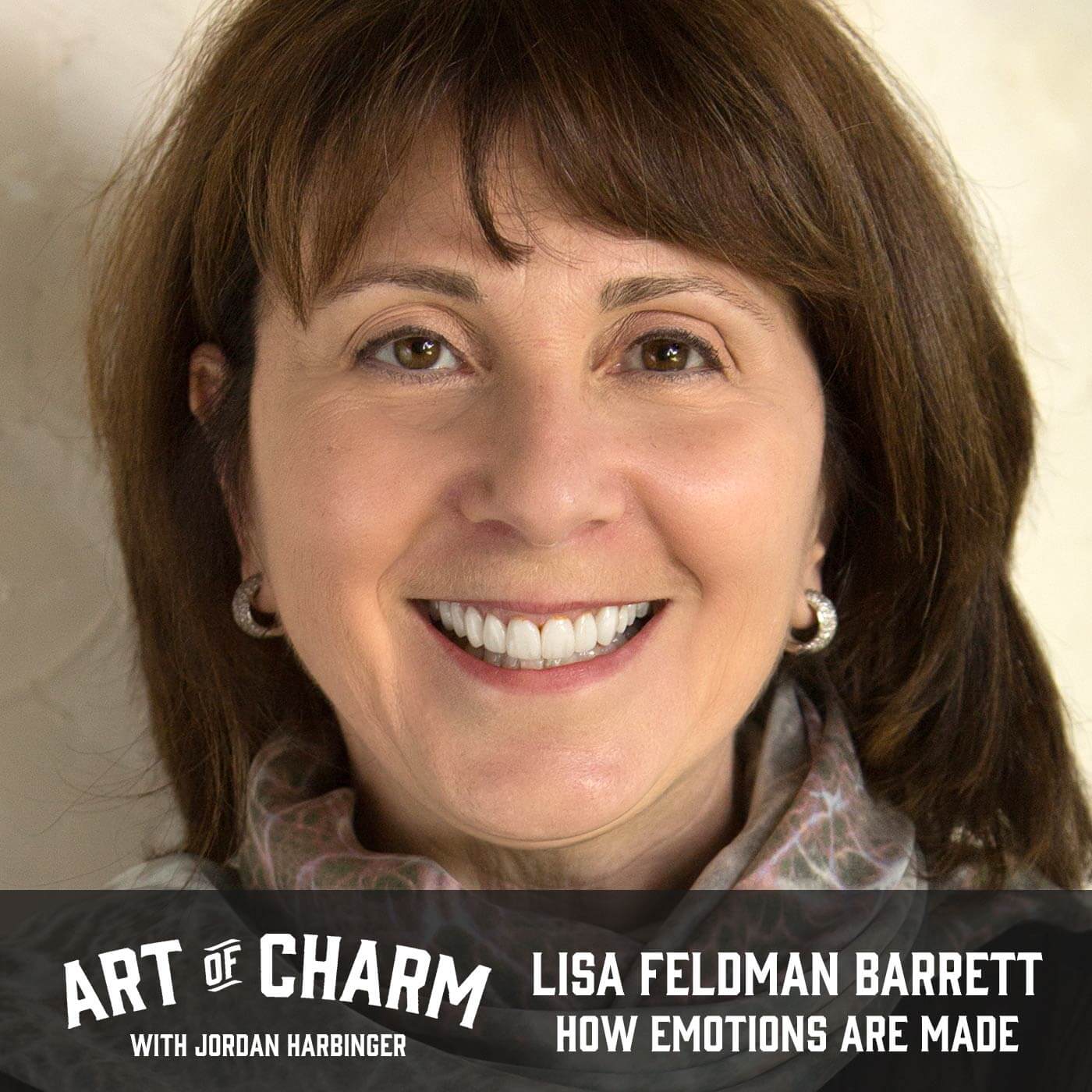Lisa Feldman Barrett (@lfeldmanbarrett) is the Director of IASLab at Northeastern University, an innovator in the field of psychology, and one of the world’s foremost researchers on emotion. Her new book, How Emotions Are Made: The Secret Life of the Brain, is out now.
The Cheat Sheet:
- New science is telling us that emotions aren’t hard-wired into our brains and universal — they’re very much affected by the cultures in which they develop.
- Affective Realism: how our brain predicts what we think we’re hearing and seeing, and how this affects our behavior.
- Do thoughts control feelings?
- How have scientists stipulated — rather than discovered — the notion of universal expressions that leads to often inaccurate stereotypes?
- Learn how we can expand our emotional palate to become more adept at describing and feeling more nuanced emotions and feelings.
- And so much more…
[aoc-subscribe]
How much control does your rational brain actually have over the emotions you feel and express? Scientists have long believed that emotions are hard-wired into our physiology, but psychologist and neuroscientist Lisa Feldman Barrett and her team at IASLab (The Interdisciplinary Affective Science Laboratory) at Northeastern University challenge this theory.
Lisa joins us to discuss their findings and her new book, How Emotions Are Made: The Secret Life of the Brain. Listen, learn, and enjoy!
More About This Show
Psychology may seem like a relatively new science to some, but as Lisa Feldman Barrett, author of How Emotions Are Made: The Secret Life of the Brain points out, the categories of mental events used in the field today originated in ancient Greece — which automatically introduces a level of unintended bias not experienced by other sciences.
“It’s really mental philosophy that’s being tested in the laboratory,” Lisa says. “As a consequence, psychologists start with categories like anger, sadness, fear, and they go looking for the physical bases of those categories. And that’s a very different and somewhat fraught approach compared to, say, starting with the structure and the function of the nervous system and asking, ‘Given how our brains are structured, what kind of a mind could a brain like this produce?’
‘What would emotions look like in a brain like this?’ and ‘Does every person have to create the same kinds of emotions — or emotions at all?'”
Emotions: Ask How, Not Where
A long-standing assumption among laymen as well as as scientists is that emotions are universally hard-wired into human beings as a species. The belief has been that, like computers to circuitry, emotions could be traced to certain parts of the brain. Trigger an emotion like happiness in a person, for instance, and the resulting smile would be recognized by someone from another culture on the other side of the world as happiness.
“The assumption is that everyone in the world has these circuits and these facial expressions and these bodily patterns and that other animals may also have them as well,” says Lisa. “So the idea is that, inside our highly evolved brains, we have this inner beast that lurks in these highly conserved circuits…”
But as we’re now learning, thanks to the efforts of people like Lisa and her team of researchers at Northeastern University’s IASLab, there’s not a part of the brain you can point to and say, ‘That’s where happiness lives.” More like companies than computers, our brains evolve to reorganize themselves when the situation calls for adaptation to survive.
So if emotions don’t actually live in static, designated parts of the brain like data on a hard drive, where do they live?
“Where in the brain anything lives is not the right question,” Lisa says. “Really, a better question is, ‘How does the brain make emotion? How does it make anger? How does it make sadness?’ Your brain is billions of neurons, which are wired together in a big network. And that network is bathed in a chemical system that changes how easy it is for neurons to pass information back and forth and speak to each other.
“So the way to think about it instead is that this one big structure can take on trillions of different patterns, and anger — for you — is some population of patterns that are whole-brain states. And anger for me will be some population of patterns too, and we assume that there’s some similarity between those patterns because otherwise we probably wouldn’t be able to communicate with each other. We wouldn’t be able to recognize each other’s experiences of anger and we wouldn’t be able to talk about anger in a way that is meaningful enough for us to communicate well.
“But there’s no requirement that, let’s say someone who lives in a culture where there’s no knowledge of anger, no concept of anger, that their brains would be able to make those patterns for anger — because their brains haven’t wired themselves in such a way to allow that to happen.”
Listen to this episode of The Art of Charm in its entirety to learn more about how Plato’s take on emotions differs from what we know about emotions today, why patterns act more as abstract statistical summaries than concrete proof in neuroscience, how the brain operates like a kitchen with a set of all-purpose ingredients, why the brain’s ability to simulate data prior to evidence is extremely efficient from a metabolic standpoint, how stereotypes of universal expressions have been stipulated — rather than discovered — by scientists, why the dispassionate judge is a myth, why people saw that dress as white and gold or blue and black, how we can become more aware of and keep the subjectivity of our emotions in check, how we can expand our emotional palate, and lots more.
THANKS, LISA FELDMAN BARRETT!
If you enjoyed this session with Lisa Feldman Barrett, let her know by clicking on the link below and sending her a quick shout out at Twitter:
Click here to thank Lisa Feldman Barrett at Twitter!
Click here to let Jordan know about your number one takeaway from this episode!
Resources from This Episode:
- Transcript for Lisa Feldman Barrett | How Emotions Are Made (Episode 616)
- How Emotions Are Made: The Secret Life of the Brain by Lisa Feldman Barrett
- IASLab at Northeastern University
- Lisa’s video series for How Emotions Are Made
- Lisa Feldman Barrett’s Website
- Lisa Feldman at Facebook
- Lisa Feldman at Twitter
- Hadza people
- The Expression of the Emotions in Man and Animals by Charles Darwin
- The Way You Saw The Dress May Have Something to Do With Your Sleeping Patterns by Rich Juzwiak, Jezebel
You’ll Also Like:
- The Art of Charm Challenge (click here or text 38470 in the US)
- The Art of Charm Bootcamps
- Best of The Art of Charm Podcast
- The Art of Charm Toolbox
- The Art of Charm Toolbox for Women
- Find out more about the team who makes The Art of Charm podcast here!
On your phone? Click here to write us a well-deserved iTunes review and help us outrank the riffraff!




